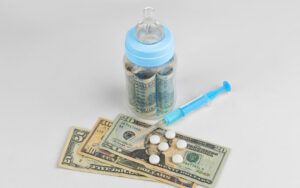Understanding IVF before starting the process is crucial to maximize its success. In this guide, I will walk you through each step of the IVF procedure, providing clear and detailed information to help you feel confident and prepared throughout your IVF journey, ensuring the best possible outcomes.
1. Initial Consultation and Testing
First and most important step is Initial consultation. In first consultation your fertility consultant will go through history like since how many years you are trying for pregnancy, both partner age, will need to know about any medical problem you have, any surgery in past, any medications you are having now, any history of previous pregnancy or abortion. Fertility consultant will also ask you about your menstrual cycle history, intercourse frequency, any problem during intercourse like premature ejaculation or erectile dysfunction, vaginismus or any other difficulty during intercourse.
- Blood test like : hormones , CBC, Thyroid , prolactin, AMH , Viral markers, Rubella, RBS , etc
- Semen analysis of partner. If require some hormonal test from partner along with viral markers can be requested.
- Transvaginal or Transabdominal Ultrasound to know status of ovary, uterus and adnexa.
- Sometime genetic testing may be needed.
2. Ovarian Stimulation
- Bloating
- Mild abdominal discomfort
- Mood swings
- Breast tenderness
3. Egg Retrieval
This is third phase during IVF cycle. In this phase actual retrieval of eggs happen. Once desired size of follicles achieved then we give trigger injection in order to bring final maturation in eggs. Approximately 33 to 36 hours after trigger injection process of egg retrieval is plan. The process of egg retrieval is done under mild sedation or anaesthesia. With the help of ultrasound machine and long needle follicles are aspirated. Immediately after aspiration of follicular fluid it is handed over to embryologist in order to search for presence of egg in it and further procedure of fertilization.
4. Fertilization and Embryo Development
5. Embryo Transfer
6. The Two-Week Wait
7. Outcome and Next Steps
Once pregnancy is positive you will have monitoring of pregnancy with ultrasound and blood test. If it’s negative, we will review the cycle, discuss possible adjustments, and consider the next steps, including frozen embryo transfer (FET) if available.
Conclusion
The first IVF cycle is a learning experience. Success rates vary based on age, egg quality, sperm quality, and underlying health conditions. While the process can be emotionally and physically demanding, staying informed and supported can make a significant difference in your journey. Your fertility consultant will guide you every step of the way, helping you feel more in control and optimistic about the outcome.





